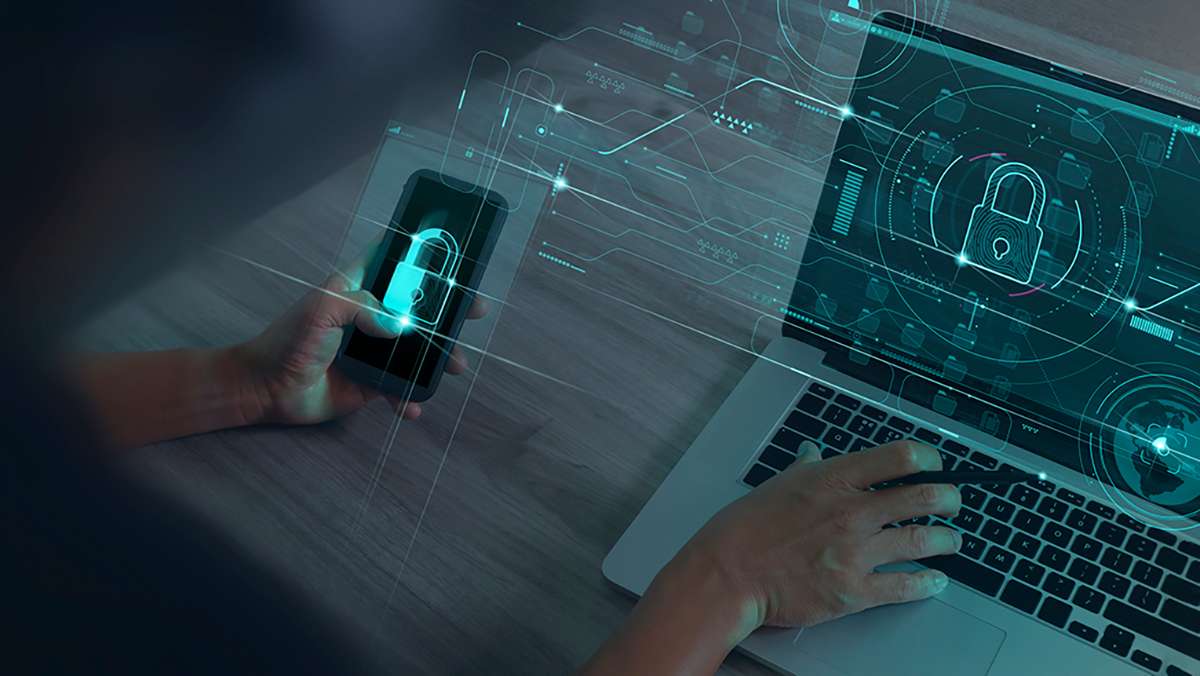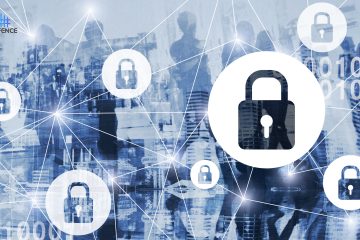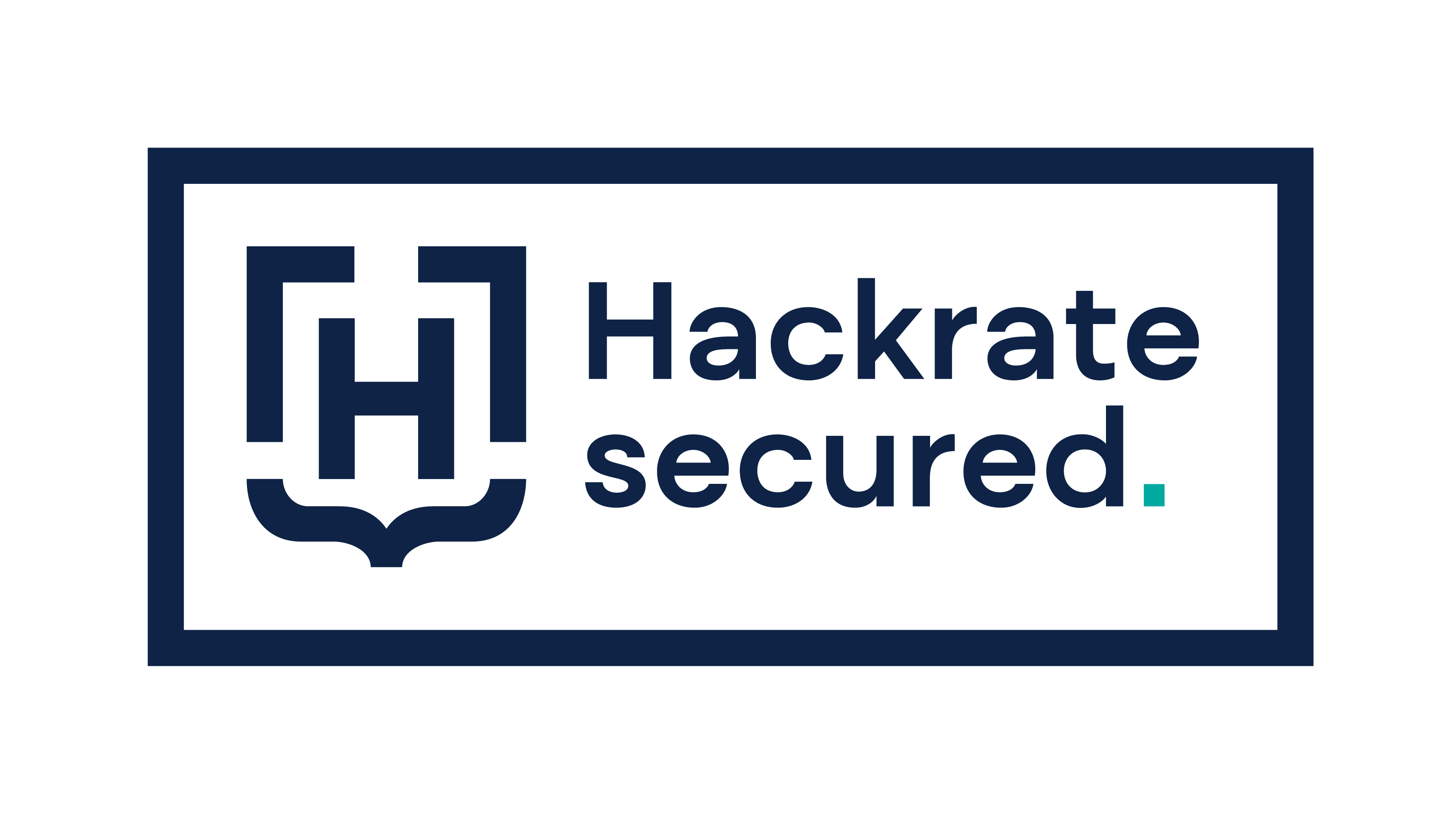Not a day goes by without the media reporting on cyberattacks of various kinds. Companies and corporations around the world are falling victim to viruses. Just remember the latest Sandworm attack from April 2022, when the virus attempted a blackout in Ukraine. Currently the global hack Solarwinds caused huge damage as threat actors turned the software Orion into a weapon while gaining access to thousands of private systems and several government systems, too.
But despite the fact that cyber security risks are increasing hour by hour, it is also true that computers have become an indispensable part of today’s business life. From correspondence to planning, calculation, design, production and accounting, they are the backbone of every company.
Find out from this blog post which are the biggest cyber security risks and how exactly you can avoid them in your company.
The biggest cyber security risks
Insider Threats
An “insider threat” is a cyber security risk that comes from within. More precisely: from inside a company or an authority. In fact, it’s not the potential access to sensitive data that makes employees, former employees or business partners such a big risk. Insider threats are particularly dangerous because hardly anyone pays attention to them.
In most companies, security measures and IT security focus on external attacks (e.g., by hackers). Securing the network externally, for example through firewalls and attack detection, is the top priority, while internal threats are ignored – and that can have dramatic and quite expensive consequences!
The real problem and the reason for the huge damage is: Internal perpetrators are usually familiar with the organization’s regulations and know exactly how to circumvent protective measures as well as how to cover up their actions.
Statistics from Verizon’s 2022 Data Breach Investigations Report show that insiders are responsible for about 20% of all security incidents.
Companies should by no means neglect the danger posed by insider threats. Not only do such incidents usually target the most sensitive areas of companies, experts also assume that the number of unreported cases is high, since many cases are either not published or never discovered.
Malicious insider
A malicious internal perpetrator is someone who intentionally abuses access privileges to steal information for financial or personal purposes. This can include a former employee who is acting out of motives such as anger, frustration or revenge and either wants to enrich themselves or simply harm the company.
But a current employee can also become a malicious insider if, for example, he or she sells secret information to a competitor. Insiders have an advantage over others with malicious intent (e.g., hackers) because they usually have intimate knowledge of the organization’s security measures and potential vulnerabilities.
Careless insider
Many people do not know: The least dangerous looking and therefore even more dangerous threat in the area of internal perpetration comes from employees who become a cyber security risk because they are ignorant or careless. For example, a loyal employee can become a threat to the company in a matter of seconds by opening a link in an email that turns out to be a phishing link.
Careless insiders, then, act without intent or criminal premeditation. Instead, their lack of knowledge about digital threats and how to properly handle data makes them a danger. Accordingly, training is one of the most effective measures to reduce the risk of such incidents.
Nevertheless, it is true that to err is human and mistakes are unavoidable in everyday work. It would be unrealistic to expect sufficient training to turn all personnel into cyber security experts. Instead, appropriate technical protective measures are needed and a special access management system, as TheFence is.
Solution for internal cyber security risks
Remember: Inside perpetrators can only compromise the data they can access themselves. So the best way to quickly and efficiently reduce the risk from inside perpetrators is to have a concept for centralized management of access permissions.
For companies of a certain size, it makes sense to automate the administration of these permissions. Use a concept of Role-Based Access Control and implement access control principles! For example reduce authorizations to a minimum according to the Principle of Least Privilege and check them continuously for their up-to-dateness!
Also task separation, authority and exceptions can be clearly regulated and defined for each individual role or employee, using the Segregation of Duties principle. Transparency and clarity with regard to individual tasks immediately will have a positive impact on both staff and the quality of the day-to-day work, not to mention the fact that countless security gaps will be closed.
Outsider Threats
Brilliant code hackers and criminals
Don’t think of the typical mobster or man with a black mask when you imagine these criminals. Cyber-criminals might be in their pajamas and in bed while constantly attacking your system looking for a way in; a thousand times a second; over and over until it gains access. These hackers are brilliant coders and they understand how people work which means they will find a way to hack your system if they try hard enough.
Malware, malvertizing, phishing, DDoS attacks, ransomware
These are just some of the viruses and methods that hackers use externally to gain access to your site, software, or network.
After gaining access, cybercriminals remain inside the system, sometimes for months, unnoticed and extracting information. Most are never found and even more are not discovered until a later date. You will face way more external attacks than internal, and the solution is to harden the perimeter to keep hackers out.
Advanced persistent threat attacks
An advanced persistent threat (APT) is a prolonged and targeted cyberattack in which an intruder gains access to a network and remains undetected for an extended period of time. APT attacks are initiated to steal data rather than cause damage to the target organization’s network.
Mayday, Mayday… we have a problem
However, knowledge of the danger of a cyber attack and the associated risks is not enough. At least as important and indispensable as the implementation and further development of a security concept is a constantly updated emergency plan tailored to the company in the event of an emergency. The (middle) management level must be sensitized enough to implement the emergency plan without hesitation, but at the same time with the necessary calm. There must be no uncertainty whatsoever as to how to respond in the event of a cyber attack. The primary objectives of response measures in the event of a cyber attack are to limit the damage that has occurred or to prevent further damage (internal and external) and to return to normal business operations.
Sample solutions are out of the question – every company is different, and this is especially true of its IT structure. In the past, the following minimum repressive measures have proven effective in practice:
Defined reporting channels:
Employees must know who their contact person is – for example, in the IT, compliance or legal departments, or (especially in smaller companies) at an external IT service provider. In the event of a suspicion or emergency, these contacts must initiate the necessary security measures, sensitize employees and, if necessary, also inform external parties affected (customers, suppliers, banks, supervisory authorities, etc.).
Immediate technical measurements:
In the case of attacks with ransomware, immediate technical measures are also mandatory. First of all, the affected system must be identified. Then, to minimize the damage, the infected systems should be disconnected from the network immediately: Network plugs, batteries and WLAN adapters should be removed or deactivated and the power supply interrupted. The corresponding instructions must be issued by a unit set up for this purpose.
Trace evidence:
It is important to secure traces right from the start, for example by backing up the suspicious email (screenshot) or by forensically securing caches and hard disks. To prevent further data loss, it is advisable to have forensic backups – before repair attempts or reboots of the affected systems are made.
Event log:
Both the attack and the measures taken should be documented in the form of a so-called event log.
Cyber safety starts with taking responsibility
As we said before, the potential cyber security risks from cyber attacks are enormous and growing unceasingly. However, since a large number of digital threats go undetected or are kept quiet for fear of reputational damage, it is up to you and your company’s board to take both preventive and repressive measures in order to minimize the damage.
The board of directors or the managing director of any company is responsible for actively taking protective measures which means developing and implementing IT defense systems, regardless of the size of the company. Only if it can be proven that all security measures had been implemented, the leader of the company exculpates him- or herself from liability for breaches of duty.
But which measures are suitable for protecting a company against cyber attacks? This really depends on the specific individual case and you need to take into consideration the size of the company, the industry in which the company operates, the type of data that is being processed, and the legally relevant regulations (Federal Data Protection Act, etc). In addition to technical security measures that we’ll discuss further on in this article, an effective security concept must also take into account organizational and personnel measures.
It is not the responsibility of the board to become IT experts, but the board must know what questions to ask the IT department. In addition, boards must provide the leadership and the commitment necessary – by proactively overseeing and holding management and the c-suite responsible – to make protecting the organization from cyber-attack a priority.
Better be safe than sorry
While pouring investments into security controls like monitoring tools, multifactor authentication, security awareness, and other security best practices have their merits.
A truly secure business has a sound cyber security strategy in place with a well defined pathway to address future security requirements.
There are six steps that you can take to prevent cyber risks at your company:
- Use strong(er) passwords
- Control access to data and systems with an Access Management Tool and by implementing Access Control Principles
- Put up a firewall
- Use security software
- Monitor for intrusion
- Raise awareness inside your company
It’s obvious that cyber security risks are lurking everywhere. It is important to recognize and accept this as a fact and to develop a security concept with the entire company that protects you from cyber security risks and includes an emergency plan in the event of attacks.
Take care of your company’s data and protect your enterprise. Start taking action to prevent cyber security risks and to gain back control over your accesses and data. If you need help with that, let us know.
Think big, but start small and automate access control to stay safe and stay ahead of cyber threats. Find out about exactly how big the cyber security risk is that you are looking at every day, with all the IT systems, employees and accesses you have to handle:
TheFence is a cloud based cyber security software that maximizes your defense with automated access risk management. Secure your inner circle, empower your workforce and defend what’s yours from both external and internal cyber security threats.
If you want to get to know more about security threats, read this article!
Also check this summary about how to implement a security concept at your organization in cooperation with Corporate to get back in control and to take first steps towards cyber resilience.















